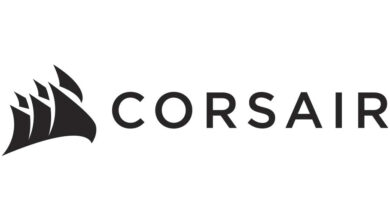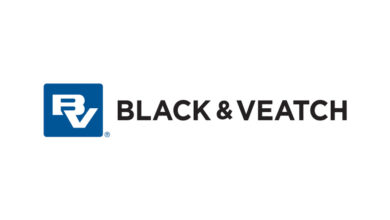From Nanotech to Billion-Dollar Markets: Discover the Potential of Self-Healing Engineering Materials – ResearchAndMarkets.com

DUBLIN–(BUSINESS WIRE)–The “Self-Healing Engineering Materials, Markets, Technology 2024-2044” report has been added to ResearchAndMarkets.com’s offering.
In a rapidly evolving landscape, self-healing materials for engineering are emerging as a transformative force, witnessing exponential growth in both research and sales. An astounding 70% of the self-healing market caters specifically to engineering needs. Projections underscore this dynamic growth, with a Compound Annual Growth Rate (CAGR) of 21% poised to drive the market towards a remarkable $100 billion valuation by 2044.
Key materials in the spotlight include polyurethanes, siloxanes, and hydrogels, followed closely by epoxies, Diels-Alder compounds, and fluoropolymers. Notably, the role of structures in self-healing materials takes center stage, encompassing microcapsules, vascular systems, and progressive scaffolds for Engineered Living Materials (ELM). In this context, demand surges for silicas and polyureas, establishing numerous billion-dollar businesses rooted in value-added materials.
A Comprehensive Overview
The report features a concise 48-page Executive Summary, encompassing foundational insights, 10 pivotal conclusions, 9 SWOT analyses, and 19 illustrative infographics and pie charts. Maturity curves projecting self-healing products in 2024, 2034, and 2044, along with an intricate roadmap detailing 5 categories spanning 2024 to 2044, form the navigational core. Forecasts extending from 2024 to 2044 are distilled into 31 succinct lines, providing a strategic overview of this evolving landscape.
Unveiling Technology, Unraveling Trends
Chapter 2 delves deep into definitions, needs, and the intricate challenge of self-healing metrics. This is followed by a comprehensive exploration of regulatory nuances and technology trends, including biomimetics and futuristic perspectives. Over 17 pages, the discourse evolves, leading to an expansive 87-page chapter delving into the self-healing toolkit. This includes a dynamic panorama of intrinsic versus extrinsic mechanisms, encompassing autonomous options ranging from operational and physical to chemical, formulation, and format approaches.
Navigating Nanomaterials and Chemical Families
Understanding the pivotal role of nanomaterials, discerning the dichotomy between physical and chemical approaches, and grasping the nuances of self-healing when wet – these critical aspects shape Chapter 3. Chemical families are dissected, while the atomic toolkit for self-healing materials takes center stage. Valuable insights into potential applications for commercialization between 2024 and 2044 emerge, accentuated by a comprehensive comparison table, hydrogel insights, polyurethane potentials, silicones, and fluoropolymers.
Revolutionary Breakthroughs, Complex Challenges
Chapter 3 unveils recent groundbreaking achievements, notably super-strong self-healing hydrogel’s revolutionary impact on soft robotics, bioelectronics, cartilage, and more. The intricate utilization of silica, Diels Alder materials, ionomers, supramolecular bonding, and proteins in self-healing form reveal profound potentials. This chapter also unravels the complexities behind self-healing metals, accentuating the field’s challenges.
Extrinsic Healing and Beyond
Progressing into Chapter 4, the narrative segues into a meticulous exploration of the latest extrinsic self-healing mechanisms via microcapsules and vascular systems. In this exploration, the “what, why, and what’s next” find comprehensive elucidation. Vascular-like self-healing strategies emerge alongside shape memory assisted self-healing (SMASH) technologies, spotlighting capabilities, markets, and technological trajectories, including hydrogel, polyolefin, and polyurethane versions.
Engineering Sectors Transformed
Chapter 4 further takes a dedicated approach to the main engineering application sectors. Aerospace, transportation, military, robotics, construction, energy, and information technology emerge as pivotal domains set for transformation. Notably, the chapter provides deep insights into making cooling layers self-healing, advancing cementitious materials, and envisioning self-healing energy storage and transmission.
Empowering Industry Stakeholders
Underpinned by meticulously researched analysis, the report emerges as a treasure trove of data. With 8 comprehensive chapters spanning 400 pages, it proffers easily comprehensible infographics, graphs, and roadmaps. Forecasts for self-healing materials and products poised to utilize them, accompanied by elucidations of the term’s myriad meanings, form key components.
As an industry-oriented resource, the report bridges the gap between academia and commerce. It appraises the most promising research, identifies commercial opportunities, and profiles potential partners and startups. Constantly updated, it evolves alongside the industry, delivering PhD-level analysis, 10 new SWOT appraisals, and insights into over 100 organizations.
For more information about this report visit https://www.researchandmarkets.com/r/2up94c
About ResearchAndMarkets.com
ResearchAndMarkets.com is the world’s leading source for international market research reports and market data. We provide you with the latest data on international and regional markets, key industries, the top companies, new products and the latest trends.
Contacts
ResearchAndMarkets.com
Laura Wood, Senior Press Manager
[email protected]
For E.S.T Office Hours Call 1-917-300-0470
For U.S./ CAN Toll Free Call 1-800-526-8630
For GMT Office Hours Call +353-1-416-8900






